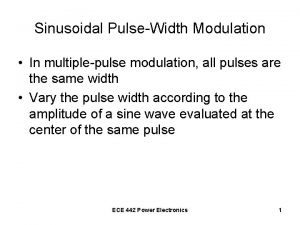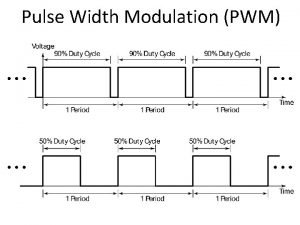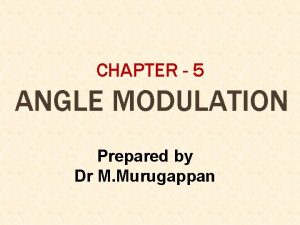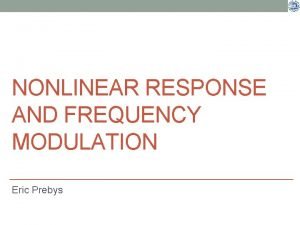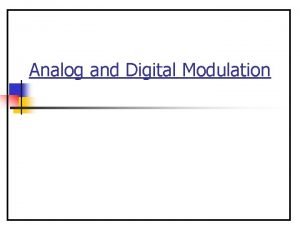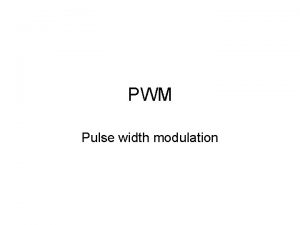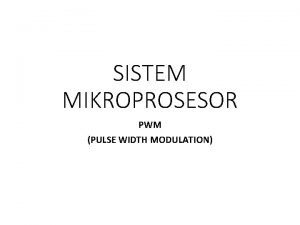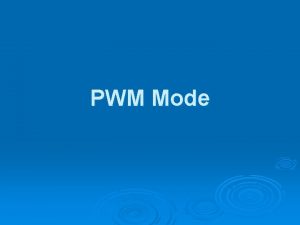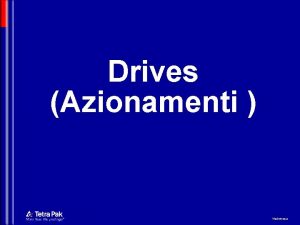PWM Pulse Width Modulation What is PWM PWM










- Slides: 10

PWM (Pulse Width Modulation)

What is PWM? �PWM (Pulse Width Modulation) is used to keep the output voltage of the inverter at the rated voltage irrespective of the output load. �Its main use is to allow the control of the power supplied to electrical devices, especially to inertial loads such as motors.

Why PWM? �In a conventional inverter the output voltage changes according to the changes in the load. �To nullify effect caused by the changing loads, the PWM inverter correct the output voltage according to the value of the load connected at the output. �This is accomplished by changing the width of the switching frequency generated by the oscillator section.

Circuits used in PWM inverters �Battery charging current sensor circuit �Battery voltage sensing circuit �AC mains sensing circuit �Low battery cut off circuit �Soft start circuit �Change over circuit

Circuits used in PWM inverters �Overload sensing circuit �Shut down circuit �PWM controller circuit �Oscillator circuit �Driver circuit �Output section

Blog diagram of basic PWM inverter

Popular PWM techniques �Some popular PWM techniques are: SINE-PWM technique Space Vector based PWM technique Hysteresis Current controller based PWM technique �Some of the PWM techniques can be realized using analog circuits alone �Some others are more easily realized with the help of digital processors like Microprocessor Digital signal processor (DSP) Personal Computer (PC)

Types of PWM �Three types of pulse-width modulation (PWM) are possible: The pulse center may be fixed in the center of the time window and both edges of the pulse moved to compress or expand the width. The lead edge can be held at the lead edge of the window and the tail edge modulated. The tail edge can be fixed and the lead edge modulated.

Applications: �Telecommunication �Power Delivery �Voltage regulation �Audio effects and amplification �Electrical

Thank You!!! www. playppt. com


